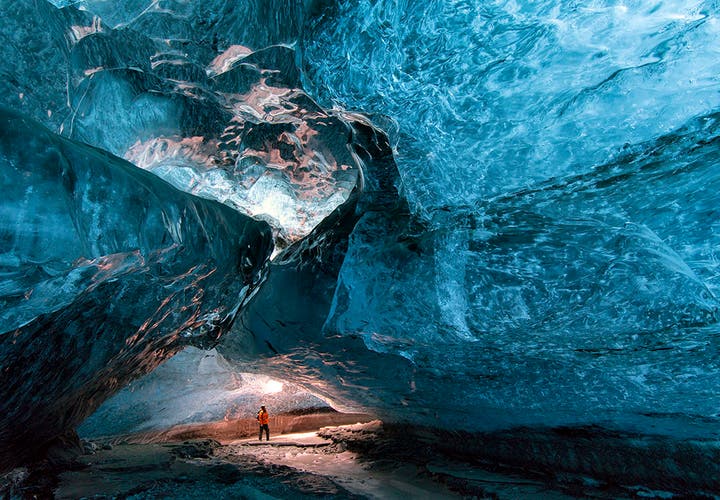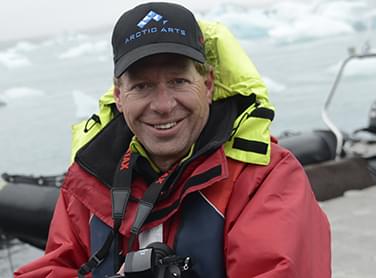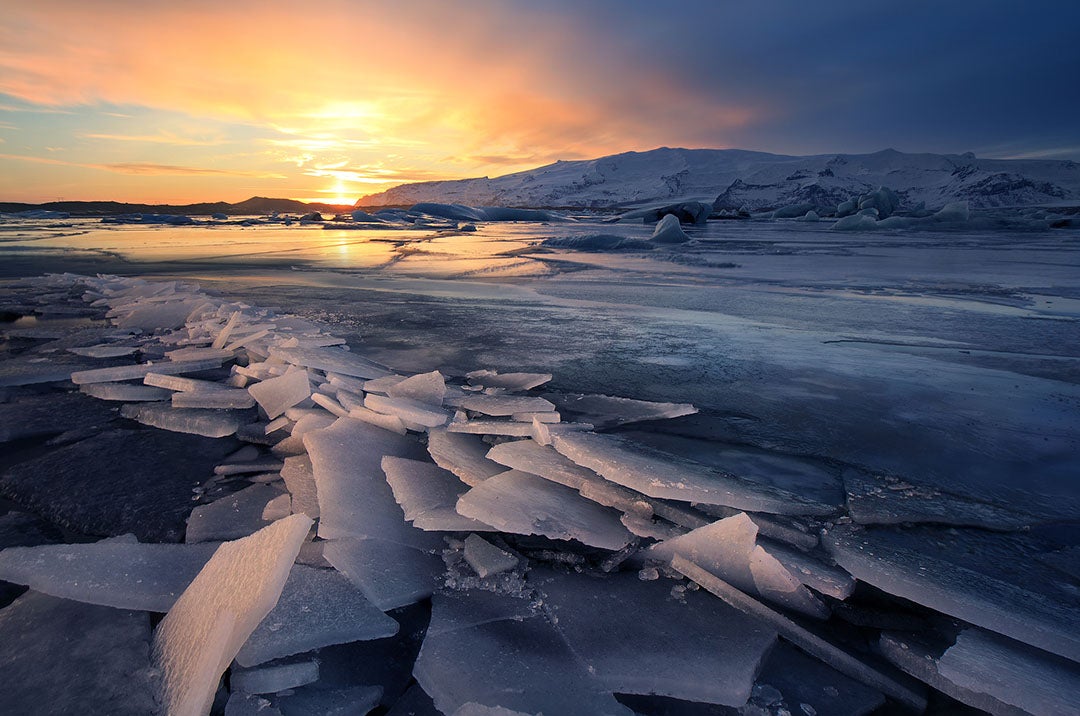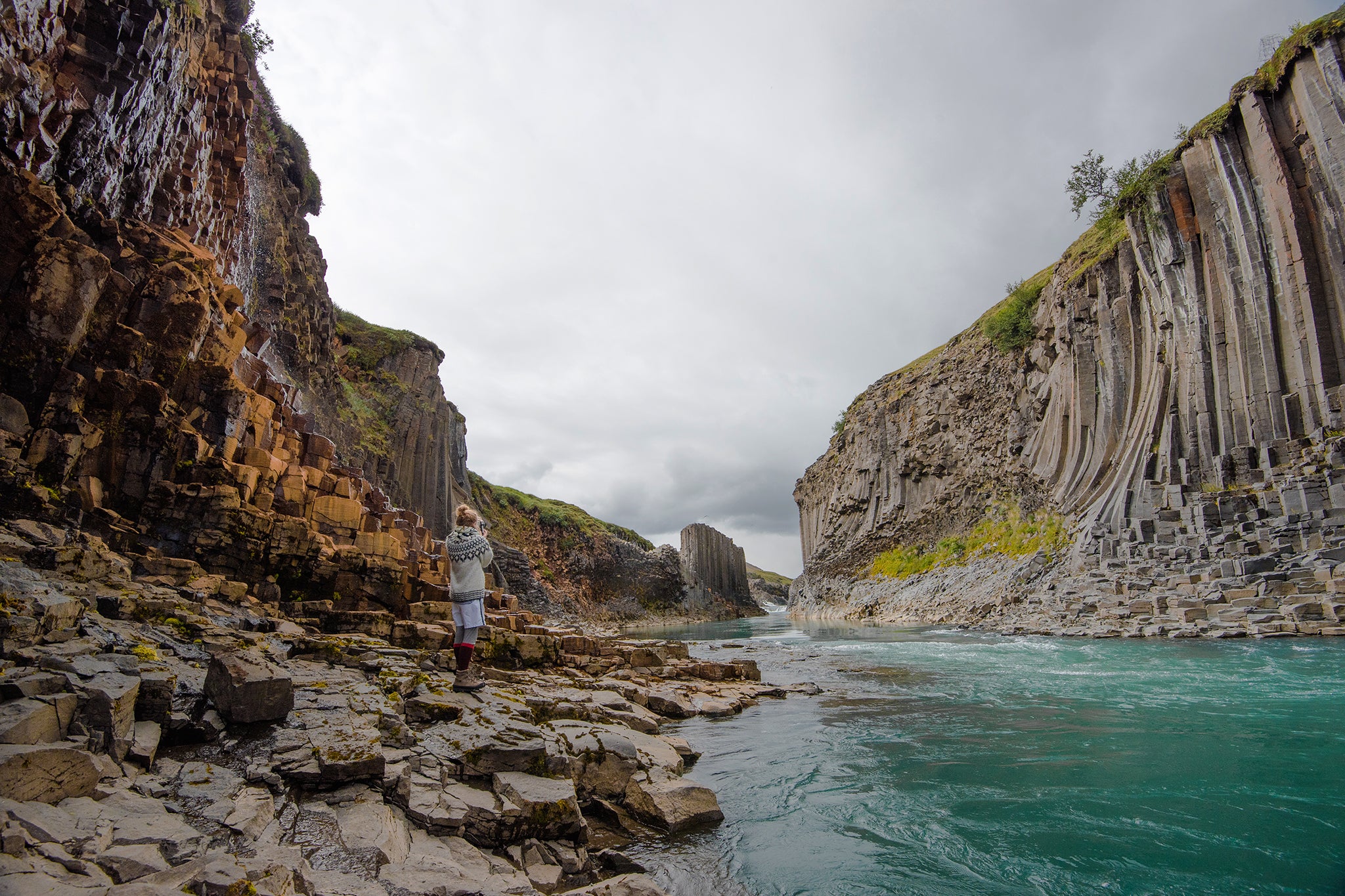I have found that, in my many journeys to Iceland, photographing the ice tends to drive my passion like no other landscape. The ever-changing colours, shapes, and luminosity of the ice, create a primal force of nature that continually draws me deeper into each scene.
The glacial lagoons of the Vatnajökull ice cap- Fjallsárlón and Jökulsárlón are a photographer’s paradise. They are easily accessible, yet because of the kinetic existence of the glacier they are never the same. They are a definite bucket list location for any photographer.
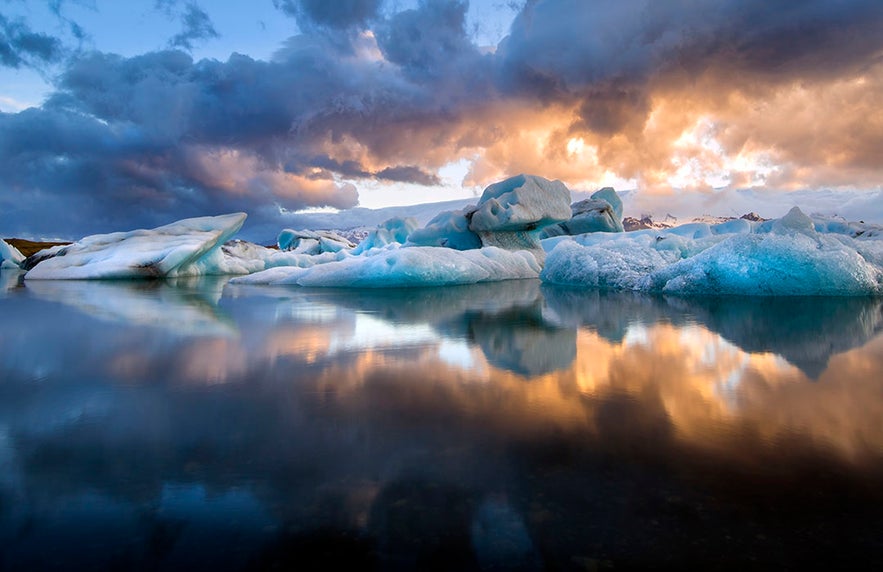
Each time that I post a photograph of Icelandic ice I am confronted with many a question as to what post processing I use to get such amazing blue tones in my ice photos. Simply: I do very little colour processing. Mother Nature works her magic and I just pass it on.
So Then, What Makes Glacial Ice So Blue?
When snow falls on a glacier and is compressed, it becomes part of a glacier, flowing over time toward a body of water. During a glacier’s travels, air bubbles that are trapped in the ice are squeezed out, and the size of the ice crystals increases, making it clear and denser.
When glacier ice becomes extremely dense, the light at the red and orange end of the spectrum can pass through the ice. Light at the blue end of the spectrum is scattered, which is what we see. In addition, minerals and organic matter may have seeped into the underwater part of the iceberg over time, creating its vivid green-blue colour.
 Diamond Ice Beach. Photo by: 'Kerry Koepping'.
Diamond Ice Beach. Photo by: 'Kerry Koepping'.
The second most asked question by inquiring photographers is what season is the best time to shoot the ice in Iceland?
Any Season. Any weather.
I have photographed July’s midnight sun at Jökulsárlón, walked across the frozen Fjallsárlón in January and witnessed some of the most amazing storms cascading down, to the lagoons, from Vatnajökull in the fall.
So personally, I find that any season in any weather, is the best time to shoot the ice. Just come prepared. The winds in Iceland can be pretty heady so use a sturdy tripod (weighted if possible), filters to protect your lens- especially on the black sand beach and dress in layers to protect yourself from the elements.
 Jokulsarlon glacier lagoon. Photo by: 'Kerry Koepping'.
Jokulsarlon glacier lagoon. Photo by: 'Kerry Koepping'.
If you’re wanting to shoot the Vatnajökull ice caves they are restricted by season. The best chance to photograph them is December-February when the weather allows the glacial surface ice to freeze and creates a safe environment below.
When photographing the caves I find that I like to use the widest lens possible and I use no filters. This allows me to look, instead, to the storyline in each cave: How old is the ice? What are the black sediment lines? How long will this cave last?
 Ice cave in Iceland. Photo by: 'Kerry Koepping'.
Ice cave in Iceland. Photo by: 'Kerry Koepping'.
Each cave holds amazing mysteries, allow yourself as an artist and photographer to find them. Become a Saga-teller and find your passion in the Ice of Iceland. Join our winter photography tours and workshops in Iceland!
